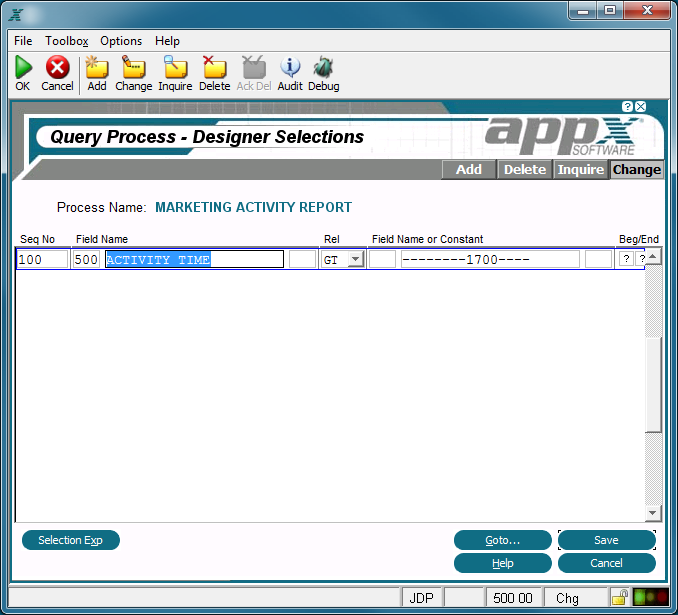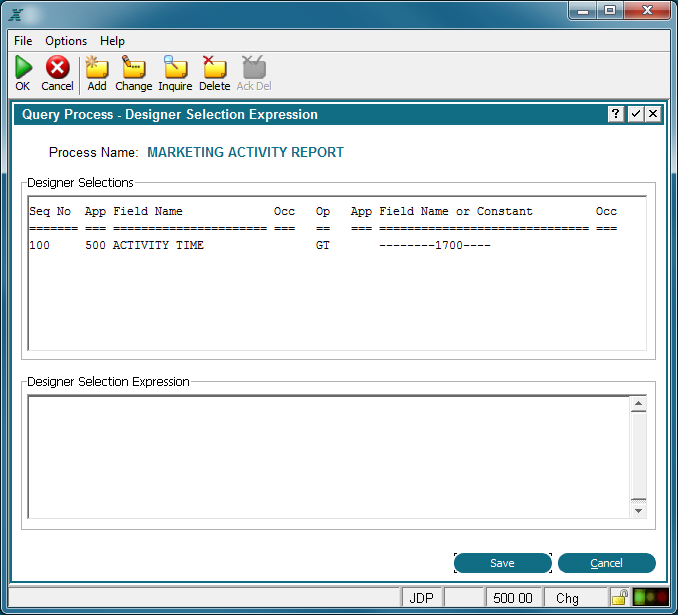Chapter 3-9: Query Processes |
Designer Selections Option The Designer Selections option allows you to access non-interactive record selections. These function in exactly the same way as enduser selections, except that the operator never sees the runtime screens and, hence, cannot modify the operators. The Designer Selections overlay is shown below:
Designer Selections Overlay Designer Selections Expression Option The Designer Selections Expression option accesses the Designer Selections Expression overlay, shown below. Designer Selections Expression specifications allow you to access non-interactive record selections. These function in exactly the same way as enduser selections, except that the operator never sees the runtime screens and, hence, cannot modify the operators.
Designer Selections Expression Overlay The Designer Selections Expression overlay contains the following field. Designer Selections Expression defines a logical expression that joins record selection constraints established in the Designer Selections overlay. Constraints are identified by their sequence number.They can then be combined with other constraints by using ANDs, ORs, and parentheses. Valid entries in a selections expression are any sequence number that a constraint is defined for, AND, OR, and ( ). If Designer Selections Expression is blank, all record selection constraints are ANDed. If either the Relation or the App/Field Name or Constant/Occ selections specification is blank, the relation is ignored (considered to be true). Any selections specification that is not explicitly referenced by a sequence number in a selections expression must be true for the selections expression to be true. A selections expression using all of the various Selections Expression entries might look something like the following: ((200 OR 300) AND 1000) OR (400 - 700) Note that the Additional Attributes option does not appear on the Designer Selections overlay like it does on the Enduser Selections overlay because it is not necessary to include the field Editable at Runtime? since the user is not allowed to modify these fields. |
Application Design Manual "Powered by Appx Software"1103 ©2006 By APPX Software, Inc. All Rights Reserved |

